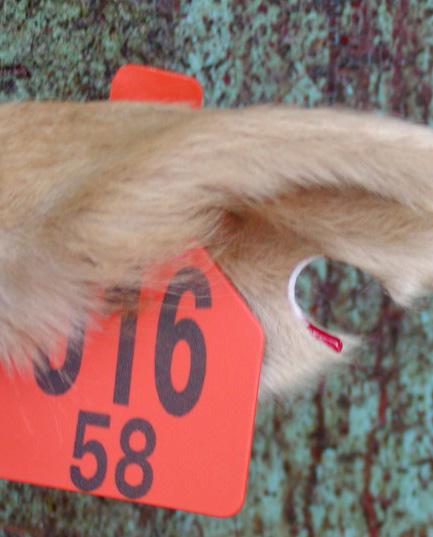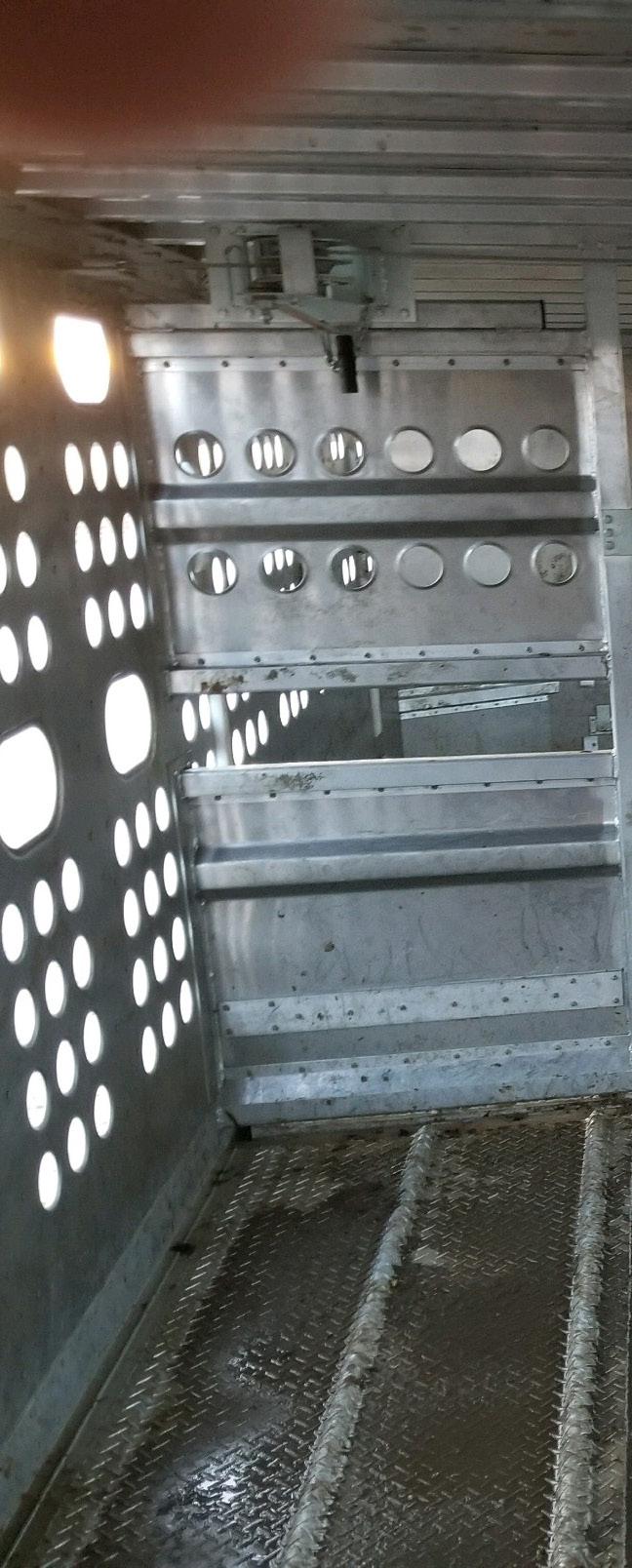
4 minute read
Cattle transport leaders Putting Cattle Welfare First
By: Dr. Tom Noffsinger and Dr. Dan Thomson Production Animal Consultation

In 2001, Ward Carpenter of W&J Carpenter Trucking (Arapahoe, Nebraska) and Rick Yost of V-Y Truck Lines (Sterling, Colorado) recognized cattle welfare and carcass bruising challenges due to finished cattle trailer designs. Feeding more Holstein steers and some of our traditional beef breed steers to out weights of 1500 pounds and heavier meant that cattle were not only heavier but also taller. Carpenter and Yost in their respective cattle hauling companies noticed cattle hitting their backs during loading and unloading when shipping cattle to slaughter in Nebraska and Colorado. They began working with Merritt and Wilson trailer designs, respectively, over a decade ago to adjust the trailers to account for this increase in size and height.
Driven by the same recognition of the increase in bruising on beef carcasses in slaughter plants, researchers at Kansas State University College of Veterinary Medicine recently published two case studies in cooperation with Cargill Fresh Meats. Both studies were conducted to observe the prevalence of bruising in cattle hauled to slaughter. Bruising severity, bruising location and other variables were measured in addition to the bruising prevalence in cattle carcasses. Both studies found that bruising prevalence was 55 to 68% in the thousands of carcasses evaluated. Both studies also found that most bruising occurred on the dorsal midline or back of the cattle (figure 1).
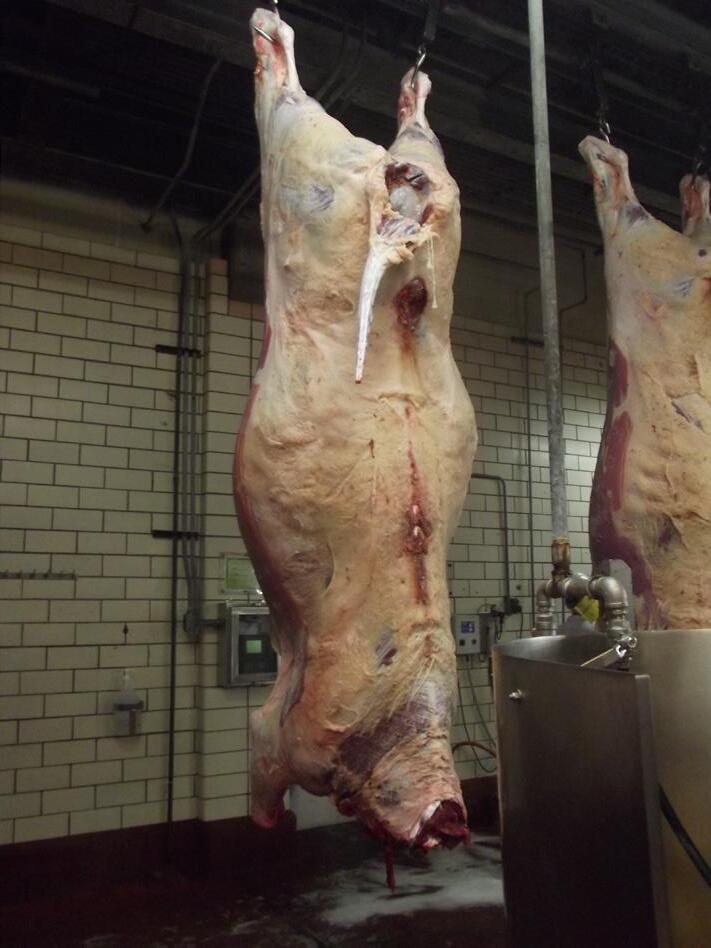
While watching cattle load and unload during the studies, it was obvious that cattle size or height, speed of entry into or unloading from the belly of the trailers and trailer types impacted cattle hitting their back loading into or unloading from the belly. Cattle jumping into the belly causes animals to hit their back towards their rump. Cattle jumping out of the belly during unloading causes animals to scrape their withers.
In the first study conducted by Youngers et al. (2017), carcasses of feedlot cattle (n = 4,287) were observed for bruising severity and location at a packing plant in southwest Kansas. Researchers observed that 55.2% of the carcasses had bruises with 25% of the bruises being severe, 36% of the bruises being moderate, and the rest of the bruises observed being minor. Most of the bruises (61.8%) occurred on the dorsal midline of the carcasses. The bruising prevalence was highest in the center region of the back (60.5%) followed by bruising on the caudal third of the carcass at 21.8% and bruising on the anterior region of the carcass at 17.6%.
Lee et al. (2017) evaluated bruising prevalence on beef carcasses relative to cattle hitting their backs during unloading at packing plants. Also, the study was conducted to see if breed type, sex or trailer type had an impact on cattle hitting their backs at unloading or an impact on carcass bruising prevalence. The average percent of cattle hitting their backs at unloading was 20.4% while carcass bruise prevalence by lot was 68.2%. Holstein cattle had increased back scrapes during unloading on combination trailers than on fat trailers. Beef steers scraped their backs during unloading at the same rate regardless of trailer type. Carcass bruising was more prevalent in Holstein cattle than in cattle which were predominantly beef breeds. The prevalence of cattle hitting their back during unloading was not associated with prevalence of carcass bruising. The lack of association between traumatic events at unloading and carcass bruising indicates that bruising does not only occur during unloading and traumatic events during loading may be more important to understand than events at unloading.
To address bruising concerns, Ward Carpenter and his team went to work to redesign Merritt trailers to haul finished cattle. Their trailer modifications include hinging the ramp to the upper deck to the side wall rather than having the ramp be stored under the top deck where cattle could hit their backs when descending into the belly (figures 2, 3). Next, Ward and his team lowered the trailer floor by three inches and extended the ramp down into the lower deck, providing cattle more clearance and preventing cattle from jumping into the lower deck. Lastly, Carpenter’s group extended the nose roof to the front of the trailer, which extends the floor of the upper deck, and moved the entry gate to the right side of the compartment (figure 4).
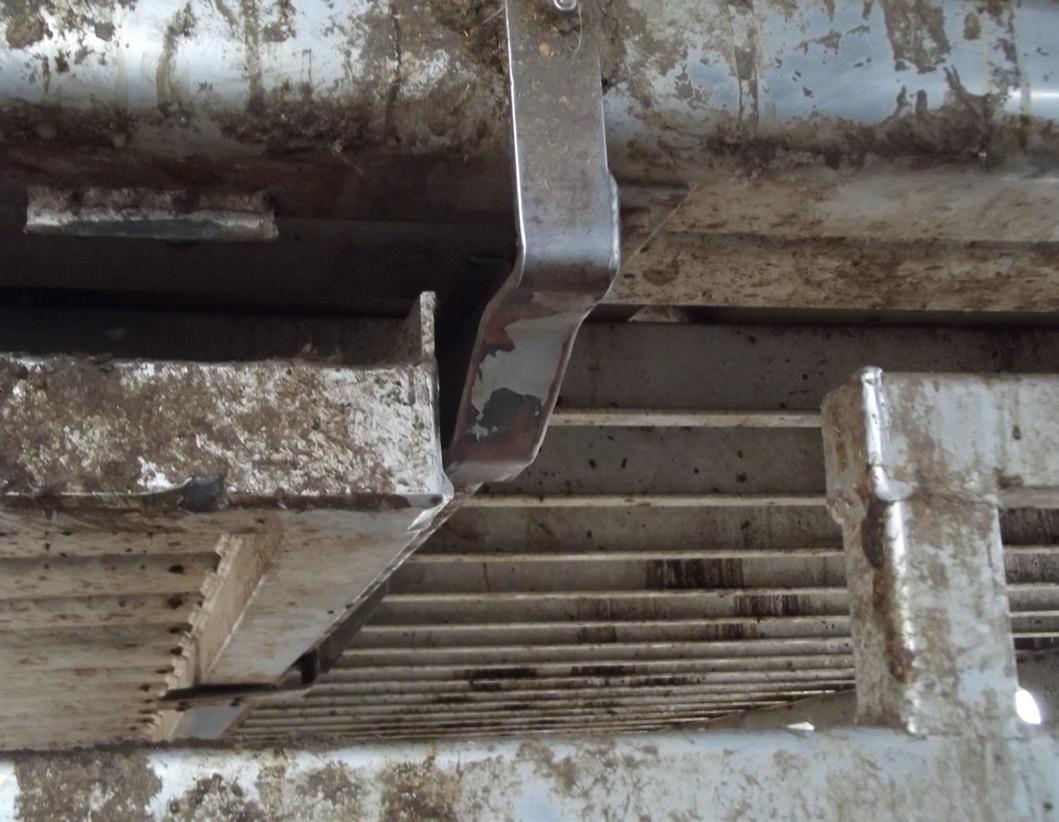
Innovations guided by Rick Yost led to similar changes in Wilson trailers. Design changes include hinging the upper deck ramp along the trailer wall, moving the upper deck floor forward nine inches, extending the ramp into the belly, creating a level upper deck in the nose for fat cattle, increasing trailer height three inches, raising the top floor deck two inches, and raising the rear “dog house” floor three inches. These improvements have led to more clearance for cattle going into the lower deck of the trailer while providing adequate room in the upper deck for finished cattle.
Dr. Tom Noffsinger said, “This is an excellent example of the industry working together to solve problems. These transporters pioneered an important initiative they recognized in the interest of cattle well-being and food quality and demanded changes from manufacturers.” Working together, cattle transporters, trailer manufacturers, cattle feeders, veterinarians and beef packers along with folks from the land grant system at Kansas State observed an issue, diagnosed the problem, conducted research and implemented changes to prevent the issue from happening. All parties must work together and keep open lines of communication to help our industry continue to get a little better each day.
Thanks to people like Rick Yost and Ward Carpenter, cattle have a more comfortable ride in their trailers.
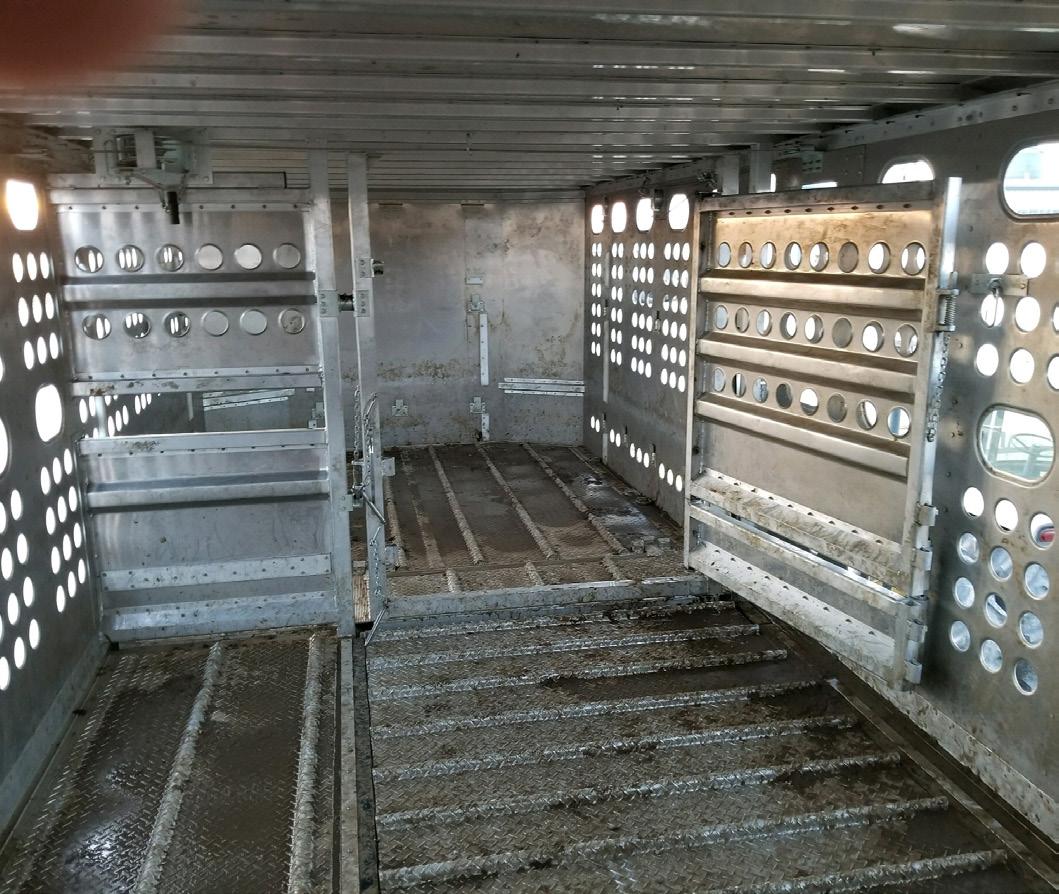
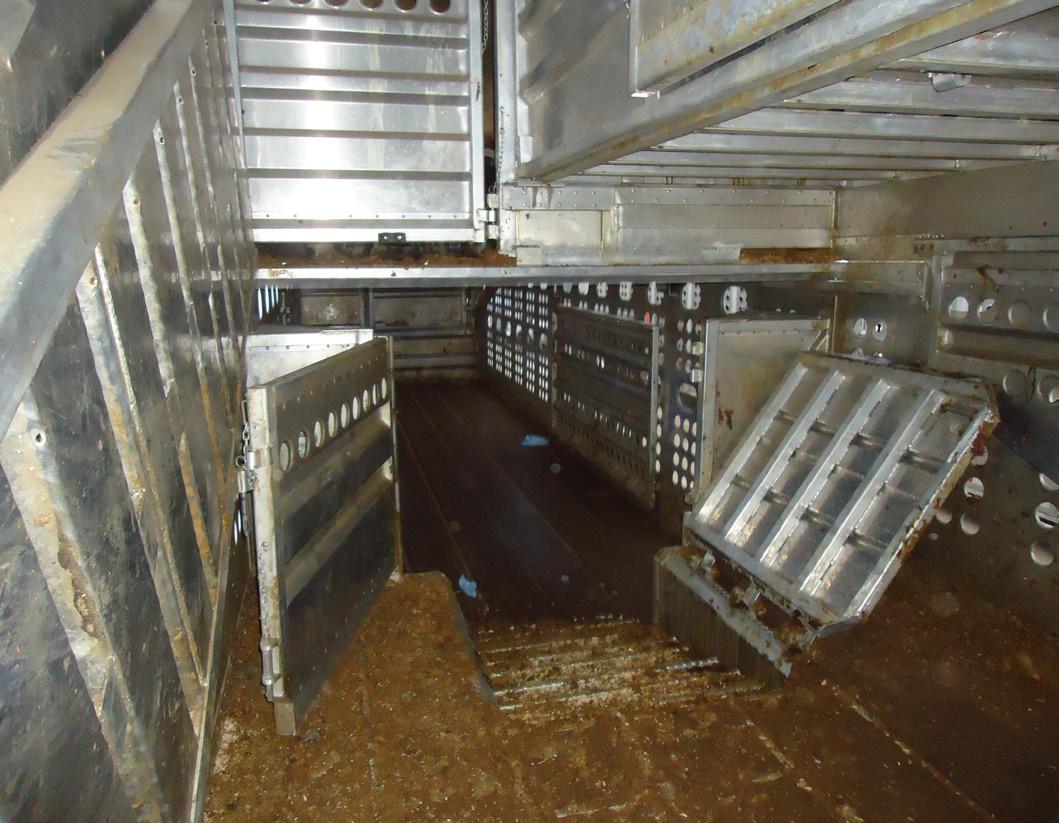
References
T. L. Lee, C. D. Reinhardt, S. J. Bartle, C. I. Vahl, M. Siemens and D. U. Thomson. 2017. Assessment of risk factors contributing to carcass bruising in fed cattle at commercial slaughter facilities. Translational Animal Science
M. E. Youngers, D. U. Thomson, E. F. Schwandt, J. C. Simroth, S. J. Bartle, M. G. Siemens, and C. D. Reinhardt. 2017. Prevalence of horns and bruising in feedlot cattle at slaughter. Professional Animal Scientist; 33:135-139.
